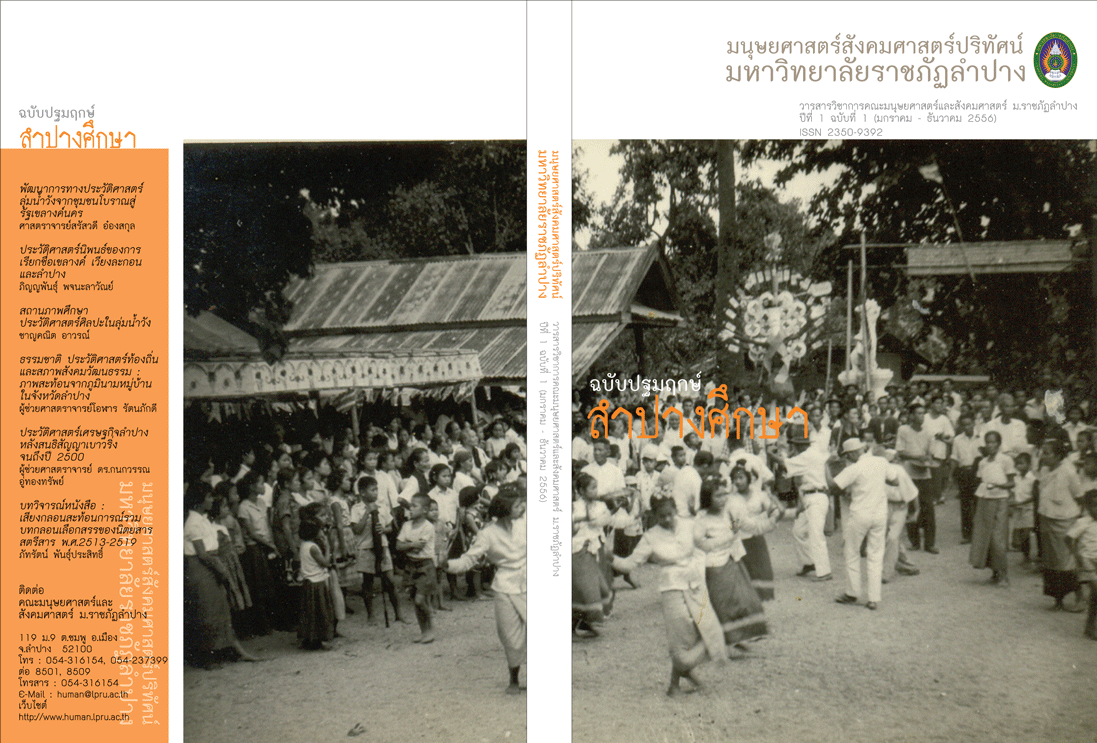สถานภาพศึกษาประวัติศาสตร์ศิลปะในลุ่มน้ำวัง / Educational Status of Art History in Wang River Basin
บทคัดย่อ
การศึกษาประวัติศาสตร์ศิลปะล้านนามีความสัมพันธ์กับระบบการศึกษารัฐไทย การเน้นกลุ่มงานพุทธศิลป์แบบงานช่างโบราณในพุทธศตวรรษที่ 21 – 22 ในลุ่มน้ำวังพบว่า ให้ความสำคัญกับกลุ่มวัดหลวงในพื้นที่ลุ่มน้ำวังตอนกลางและตอนใต้ เน้นการศึกษาด้านรูปแบบเป็นกระแสหลัก ส่วนการใช้หลักฐานให้ความสำคัญกับงานสถาปัตยกรรม โดยเฉพาะอย่างยิ่งในกลุ่มงานพุทธศิลป์ในวัดพระธาตุลำปางหลวง ประกอบกับการขาดหลักฐานเอกสารทางประวัติศาสตร์ในแบบ “พื้นเมือง” ทำให้ประวัติศาสตร์ศิลปะลุ่มน้ำวังจำเป็นตองอาศัยเอกสารทางประวัติศาสตร์จากเมืองเชียงใหม่ – ลำพูนเป็นหลัก เช่นเดียวกับการเปรียบเทียบรูปแบบศิลปะด้วย สำหรับงานศึกษาพุทธศิลป์ช่วงพุทธศตวรรษที่ 24 – 25 พบว่าในกลุ่มงานลุ่มน้ำวังตอนบนยังมีปริมาณน้อย แต่กลับมีการค้นคว้าศึกษางานศิลปะพื้นบ้านมากขึ้น อย่างไรก็ดีงานศึกษาในช่วงหลังทศวรรษ 2540 เป็นต้นมาได้ค้นคว้าข้อมูลใหม่และเปิดพรมแดนความรู้ใหม่ ทั้งในด้านหลักฐานและวิธีการวิเคราะห์ พร้อมกับการสร้างตำแหน่งแห่งที่ของท้องถิ่นอีกด้วย
Lanna art historical study is related to the state education system and focus groups in ancient Buddhist art in Century 21-22 importance to the monastic groups in central and southern Wang basin,focus on education as a mainstream model. The use of evidence, with a focus on architecture. Especially in the arts in the Buddhist Wat Phra That Lampang Luang. Attributed to the lack of historical documents in a " native " to the history of art , Wang watershed requires historical documents from the city of Chiang Mai – Lamphun prevail. As well as a comparison with the art form. Studied Buddhist art for centuries during the 24 to 25 found that in the group WANG upper basin has less volume that have researched the folk art . However, studies in the decade after 2540 , the new data to research in open borders and new knowledge. Both the evidence and analysis methods with the position of the local as well.



